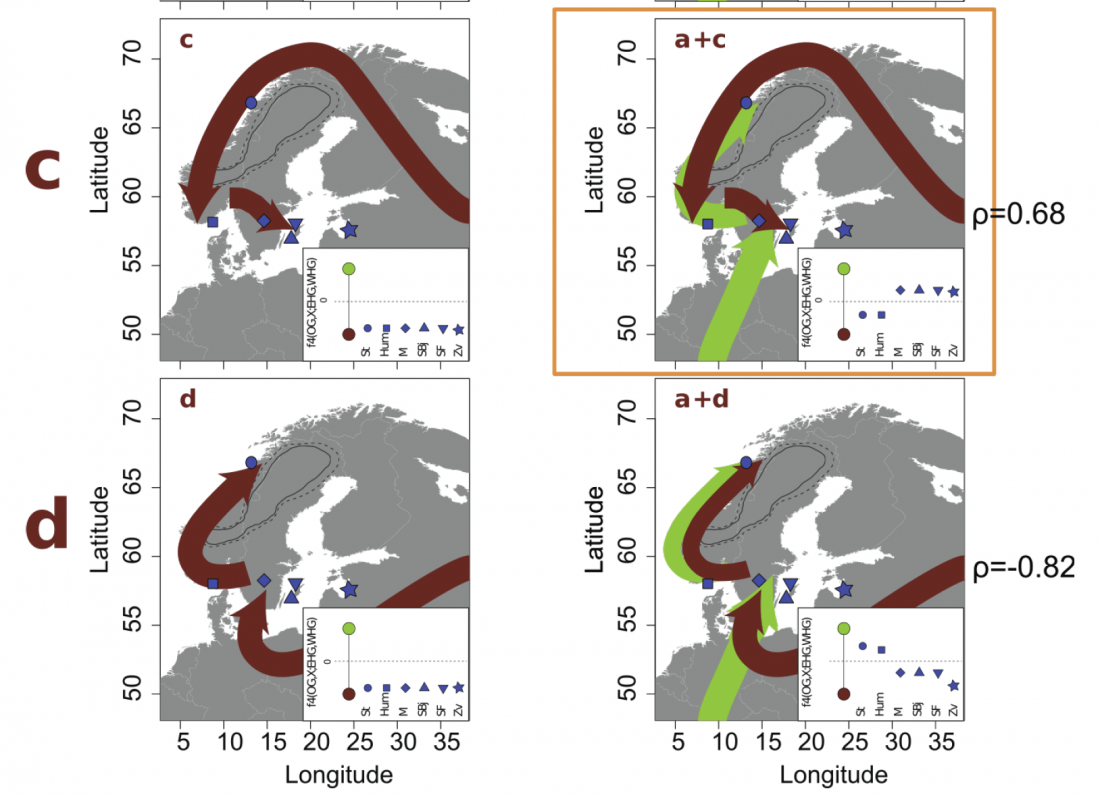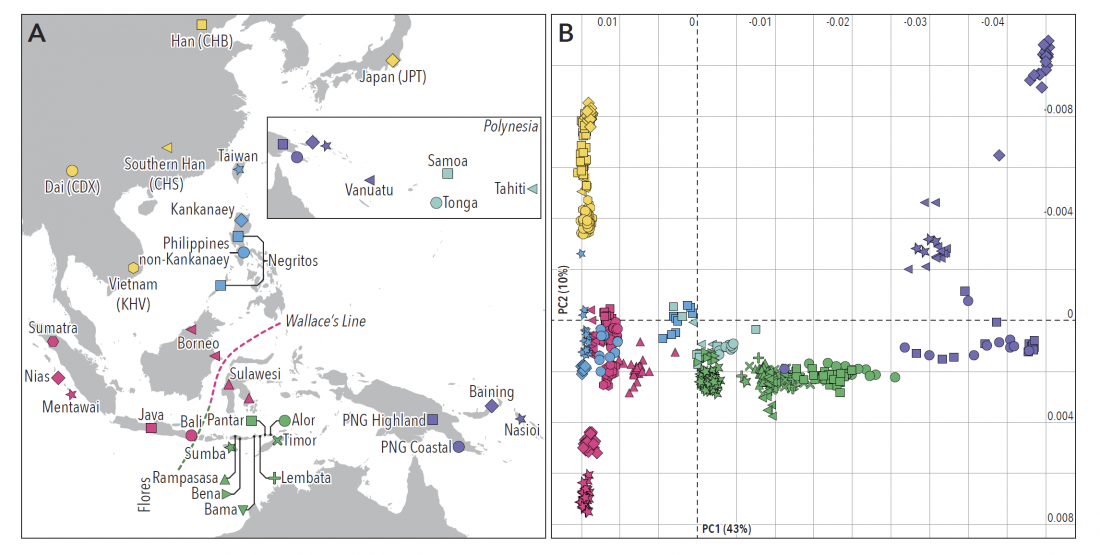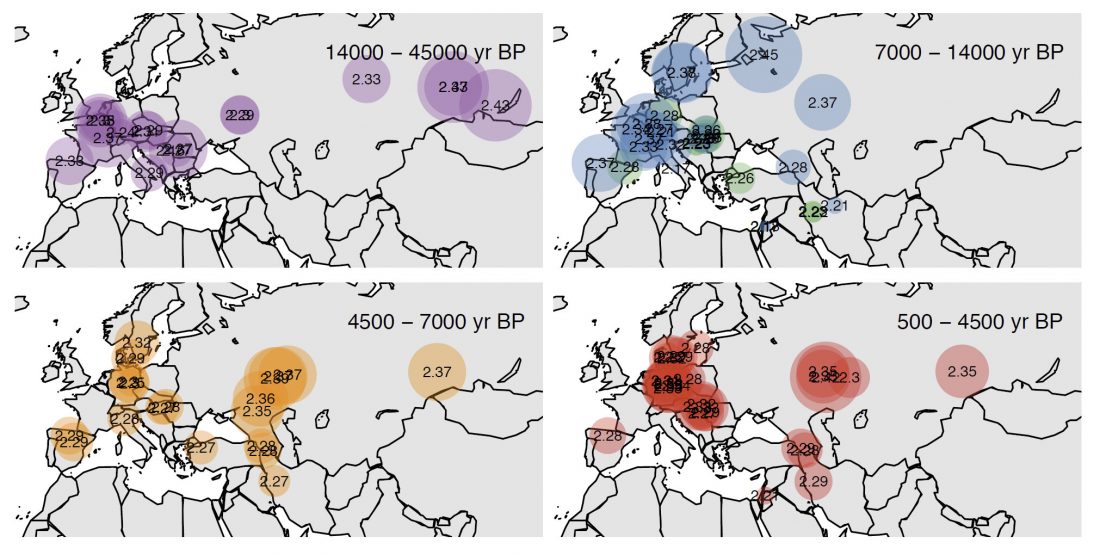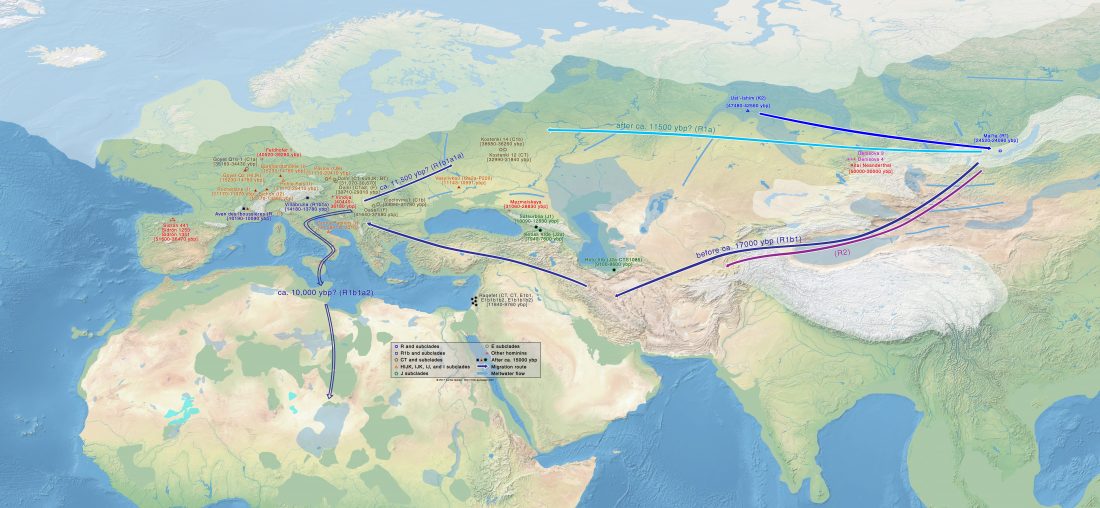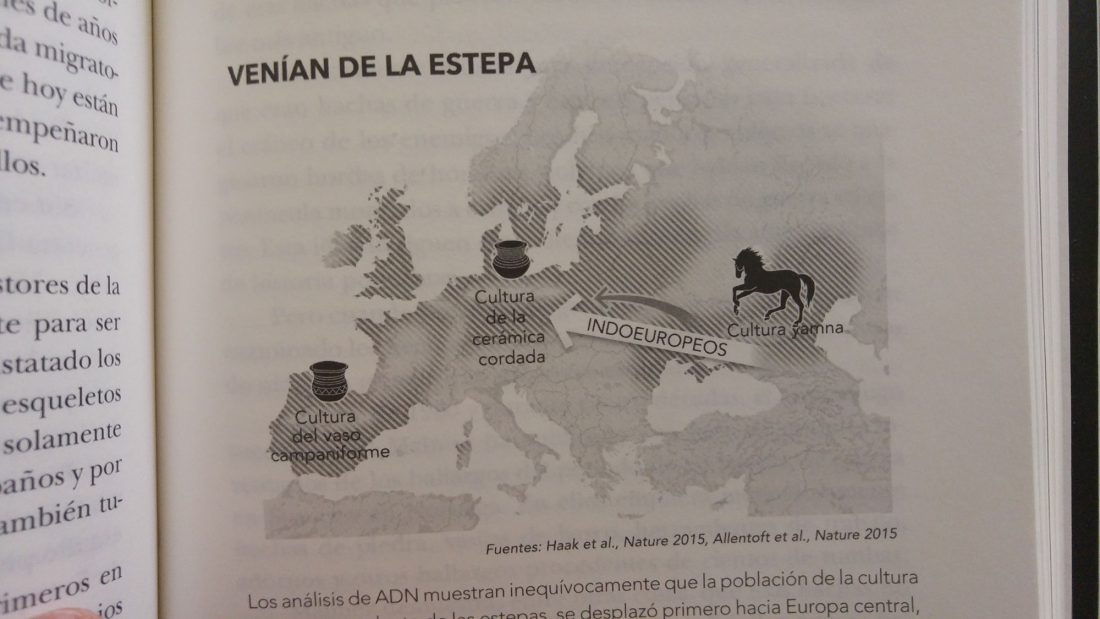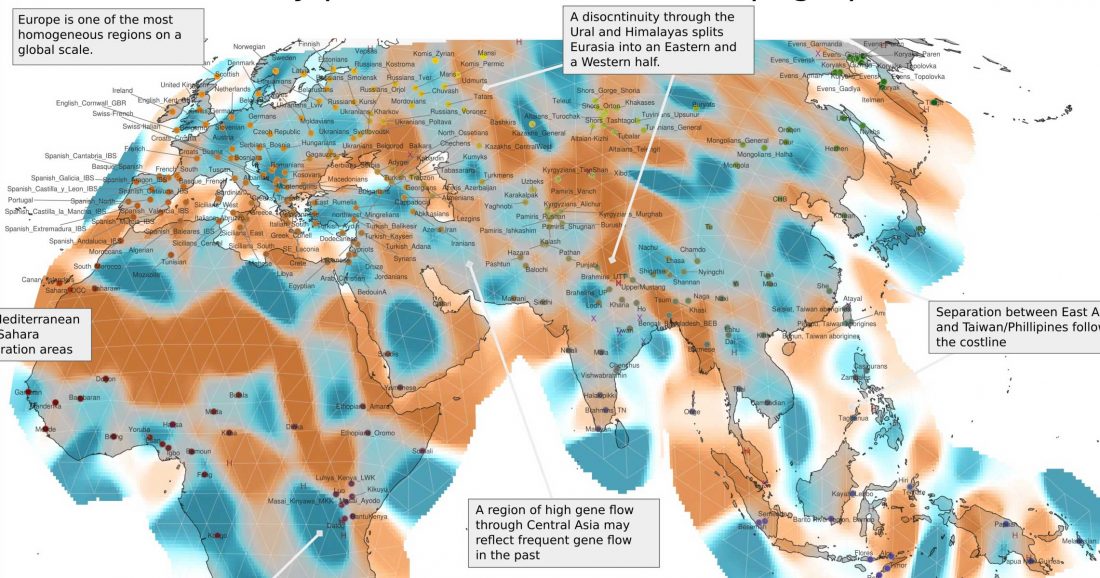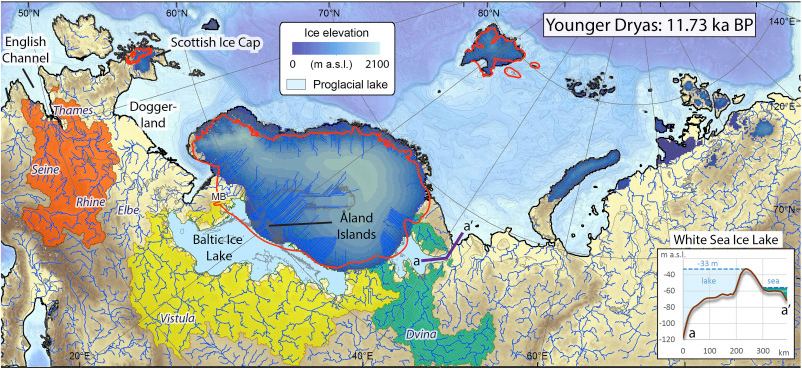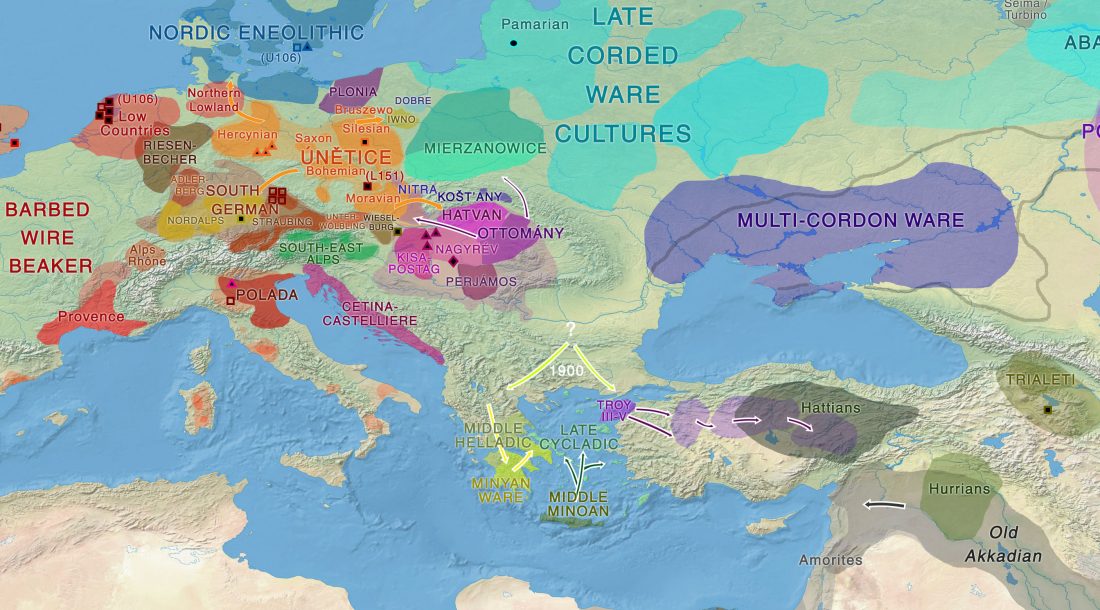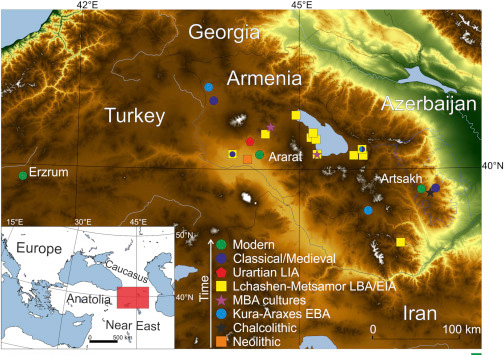Ancient DNA samples from Mesolithic Scandinavia show east-west genetic gradient
New pre-print article at BioRxiv, Genomics of Mesolithic Scandinavia reveal colonization routes and high-latitude adaptation, by Günther et al. (2017), from the Uppsala University (group led by Mattias Jakobsson).
Abstract (emphasis mine):
… Read the rest “Ancient DNA samples from Mesolithic Scandinavia show east-west genetic gradient”Scandinavia was one of the last geographic areas in Europe to become habitable for humans after the last glaciation. However, the origin(s) of the first colonizers and their migration routes remain unclear. We sequenced the genomes, up to 57x coverage, of seven hunter-gatherers excavated across Scandinavia and dated to 9,500-6,000 years before present. Surprisingly, among the Scandinavian Mesolithic individuals, the genetic data display an east-west genetic gradient
